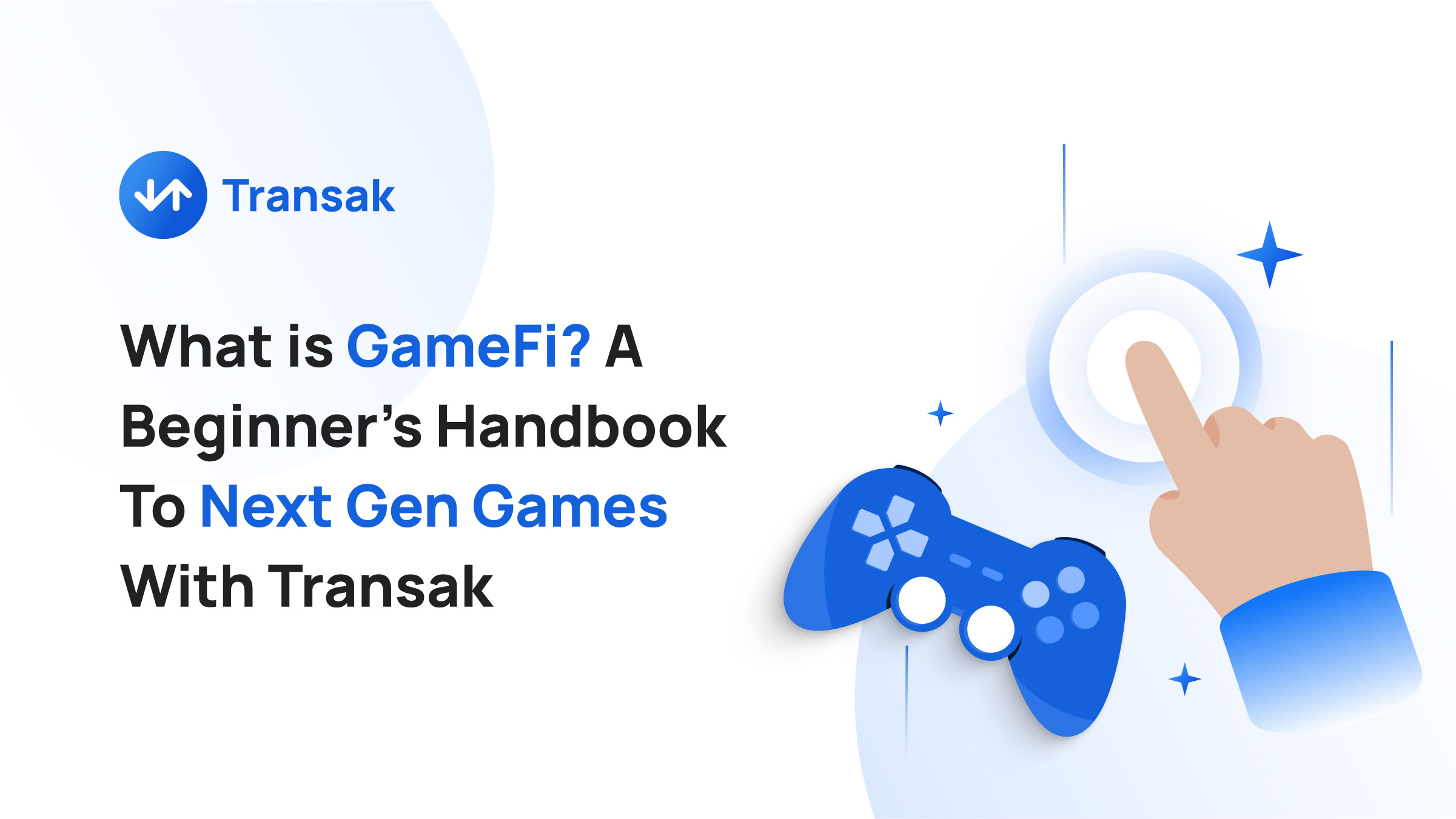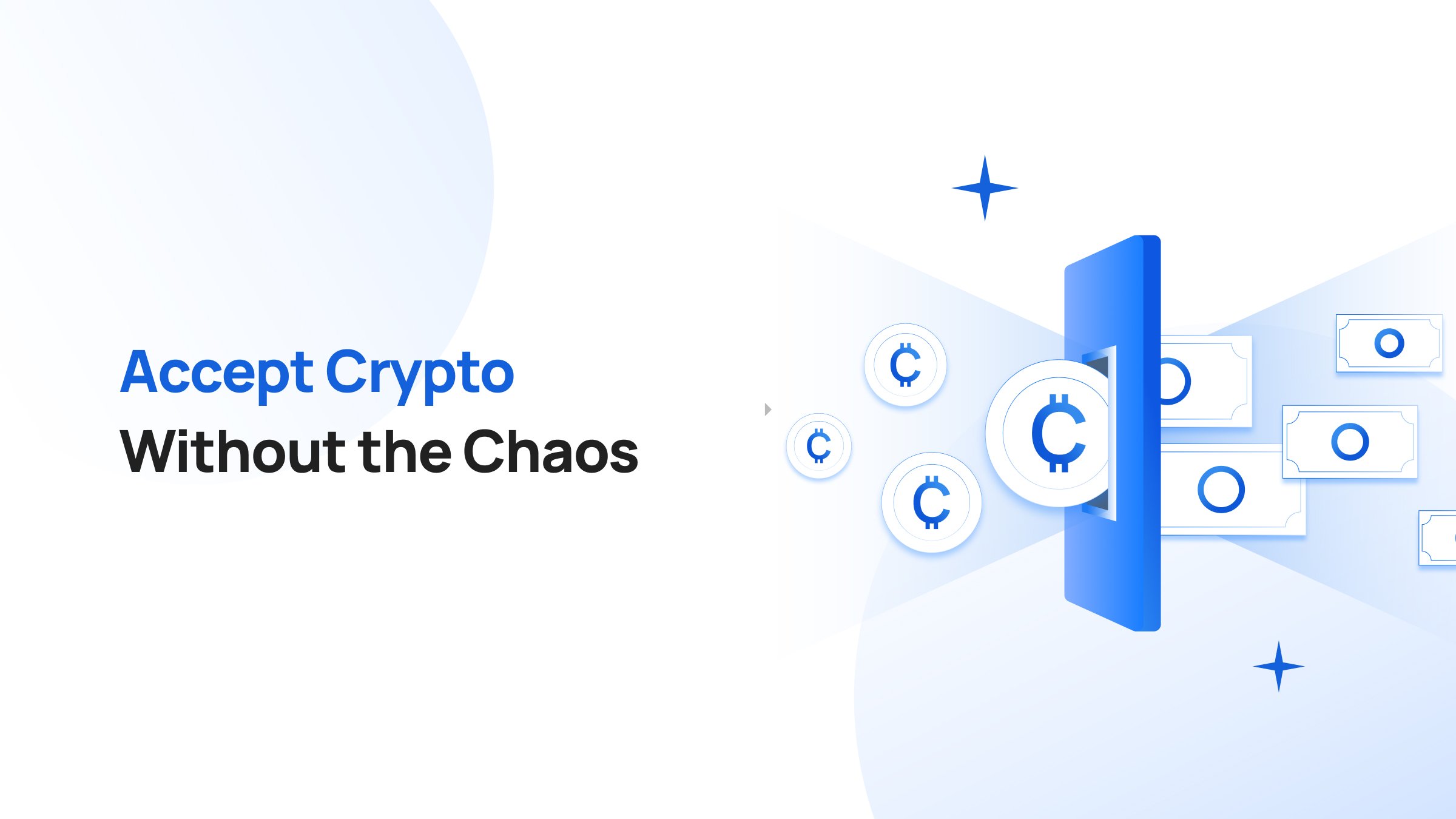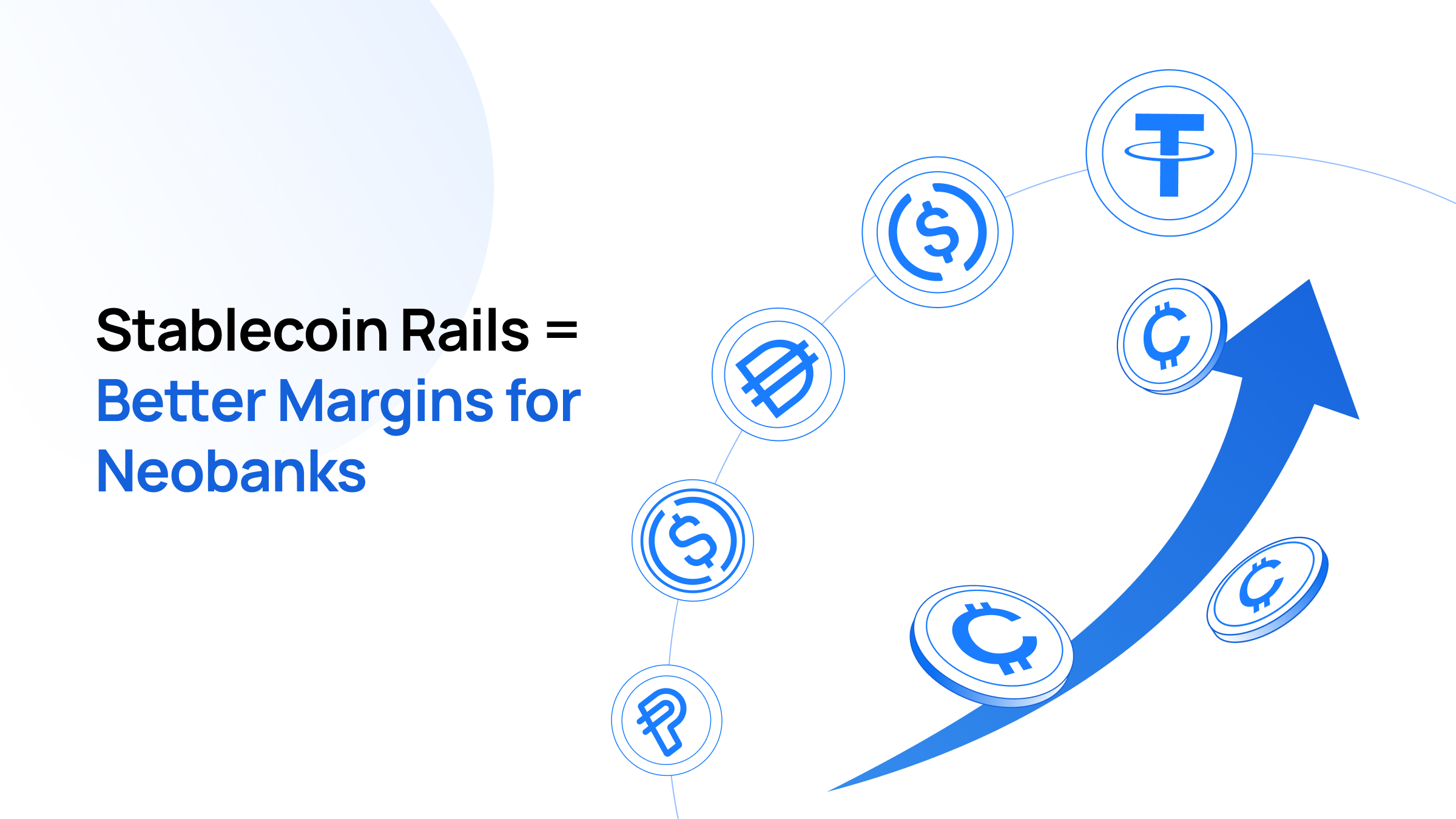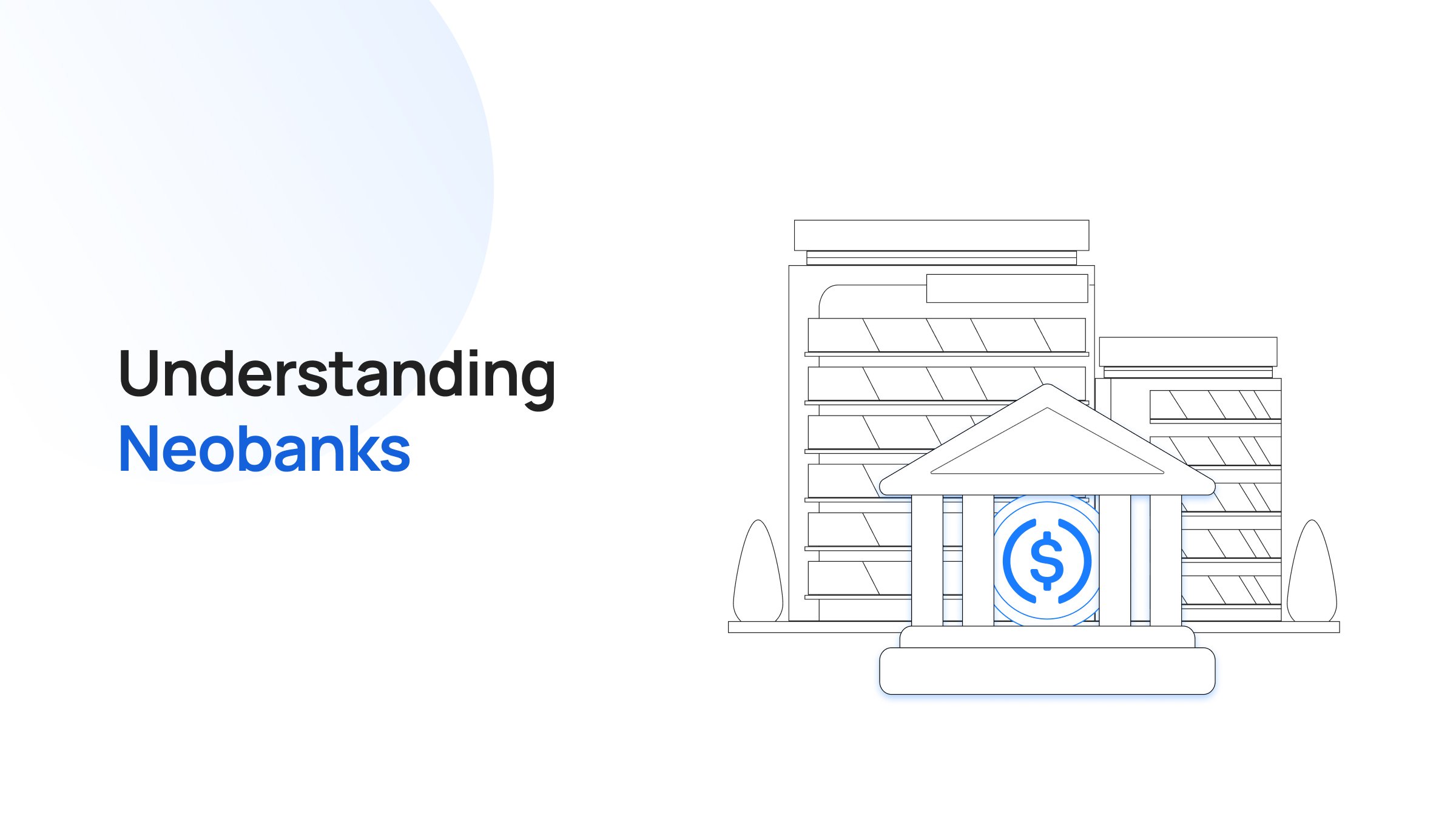GameFi promises to revolutionize the way people play games by combining blockchain technology with traditional gaming models. Today, more than half of all blockchain activity is through GameFi.
But how does blockchain gaming work exactly, and is it all just a fad or is it here to stay?
This article covers everything you need to know about the fusion of gaming and crypto.
What Is GameFi?
GameFi is a decentralized gaming ecosystem that uses digital asset ownership via the blockchain to create more efficient gaming models.
In a blockchain-based game, players can own their in-game items, trade with other players anywhere in the world, and earn rewards that have real-world value.
With GameFi, game developers are creating new types of gaming and business models that were not possible earlier, such as player-owned economies, DAO-based games, and more.
Further, by building atop open protocols, game designers can create crypto games and design a game economy that is interoperable with other games on other blockchains.
Games like The Sandbox, for example, allow players to build their own in-game assets and mint them as NFTs without having to write any code.
Decentralized games are still in their infancy, so, it can be difficult for a casual gaming enthusiast to clearly understand how it all works. But a general understanding of how GameFi works will go a long way in making the most out of it.
How Does GameFi Work?
Most blockchain games have an in-game economy within their metaverse, a virtual gaming environment where players can interact with each other.
At the core of GameFi is the concept of digital asset ownership.
In a traditional game, your in-game items and the game’s progress are stored on centralized servers. The game company has complete control over your in-game items and can take them away from you at any time.
With GameFi, however, your in-game items and progress are stored on a blockchain. This means that you have full ownership and control of your data. No one can take it away from you, not even the game company.
This is possible because the blockchains are immutable, meaning that once something is stored on it, it cannot be changed or deleted. So, when you store your in-game items and progress on a blockchain, they are there forever.
In addition to digital asset ownership, GameFi also enables new types of socio-economic constructs within games and broad spectrum business models within games and IRL.
With player-owned economies, players can freely trade with each other without the need for a central game company. Such autonomy allows for a fairer and more transparent economy as there are no middlemen taking a cut of the profits.
DAO-based games are a type of game in which players cooperatively own and govern the game. In a DAO-based game, the democratization of governance leads to a more equitable and decentralized game development process as well as top of a more engaged and invested community of players.
Now, with NFTs becoming mainstream, even people from middle-income households in developing nations are able to jump on the GameFi bandwagon to support themselves and their families.
For example, Axie Infinity, one of the world's most popular blockchain games, saw an unprecedented uptick in game installs in the Philippines from the second quarter of 2022. To put this in perspective, the Philippines alone accounted for over 40% of global Axie Infinity downloads.
From a technical standpoint, most blockchain games are built on the application layer of the DeFi tech stack as shown in the image below.
Regardless of the game mechanism, or genre, almost all blockchain games today are built on the Play to Earn (P2E) model.
Understanding The Play-to-Earn Model Of GameFi
In the traditional gaming model, players exchange their time and effort for in-game currency that can be used only within the game. This is known as the Pay-to-Play (P2P) model.
With the P2P model, game companies make money by selling in-game items and currencies to the players. This is the traditional business model of video games.
In contrast, the Play-to-earn model enables players to earn real-world value from playing the game. This can be in the form of cryptocurrency, NFTs (virtual real estate, weapons, avatars, in-game merchandise, etc.), SBTs, and more.
With the P2E model, game creators make money by charging a small fee when players withdraw their earnings from the game. This is similar to how online casinos work.
Are Play-to-Earn games free to get started?
Most P2E games require an initial investment to get started because updating a blockchain's ledger requires a transaction, and every transaction is associated with a fee.
The size of the investment, however, is heavily dependent on the blockchain on which the game is running. For example, network fees on Ethereum are far greater than on Solana. On Ethereum itself, there are ways to circumvent high fees, like building games on Immutable, for example.
Many other P2E games require you to purchase an NFT to get started. For example, in Decentraland, players need to purchase virtual land before they can build on it.
In some cases, game creators will airdrop NFTs to new players as a way of getting them into the game.
There are a few P2E games, such as Thetan Arena and Sorare, that don't require an initial investment, but typically it’s more difficult to progress to higher levels unless an early investment is made.
The Understated Need For Digital Asset Ownership In GameFi
Humans have always longed for ownership. According to some studies, a sense of ownership promotes prosocial behavior. Unfortunately, this is an area in which web2 has come up short.
Hidden within mountains of paperwork of centralized gaming entities, in legal jargon, are subtle statements implying that the users are not in control of the data they submit to the game or the digital assets that they acquire during gameplay.
Digital asset ownership provides players with a sense of security and permanence.
Since blockchains are immutable, the record of ownership cannot be changed or deleted without the owner actively performing a transaction for ownership transfer. So, when you store your in-game assets and progress on a blockchain, they are there forever and they're yours.
But the more important question is, "Would blockchain games see the same success without the P2E model?"
The answer is a resounding “No.”
While the P2P model has been the traditional way of monetizing video games, it has several issues that the P2E model solves. Let's take a look at some of these issues.
1. Most players never spend any money on games
In the traditional P2P model, only a very small percentage of players (less than 3%) spend money on in-game items or currency. This is because the value derived from playing the game is not worth the money required to progress in the game.
With the P2E model, however, all players can earn real-world value from playing the game. So, even if they don't spend any money, they are still making money from playing the game.
2. There is a high barrier to entry for new players
Regular web2 and offline games have a much lower entry barrier. Even 5-year-olds are able to search for a game they like, download it, install and start playing within minutes.
But with blockchain games, there are several prerequisites like creating a wallet, understanding what a seed phrase and public address is, learning about gas fees, and much more.
3. In-game assets have no value outside of the game
In the traditional P2P model, in-game items can only be used within the game. They have no value outside of the game.
In the P2E gaming model, in-game assets can be sold for real-world value. This allows players to cash out their earnings and use the money to buy other things that they need or want.
4. Graphic and latency issues
Since blockchain games are still in their infancy, many of them have subpar graphics and suffer from latency issues. This is because the blockchains on which they are built are not designed for gaming.
Therefore, incentivization is key for blockchain games to hit mainstream adoption.
Will P2E Stand The Test Of Time?
The P2E model is still in its early stages. And it remains to be seen if it will stand the test of time.
What we do know, however, is that the traditional P2P model is not working for the majority of gamers. And the P2E model presents a viable solution to many of the issues that gamers face.
On the other hand, news articles and the general public sentiment around P2E clearly imply that most gamers are playing these games first for the money and second for the sheer love of gaming.
This is not a sustainable model in the long run. For P2E games to be successful in the long term, they need to find a way to incentivize gamers to play for the love of the game and not just for the money.
Otherwise, P2E games will just be a fad that dies out after a few years when better business models emerge.
"Play to Earn will lose.
The future is Play and Earn."
DeFi Applications Within GameFi
While the P2E model is a great way to incentivize players, it is not the only way.
Another way to incentivize players is by integrating DeFi applications within blockchain games.
DeFi applications can provide players with a way to earn interest on their in-game assets. For example, if a player has $100 worth of in-game assets, they can lend them out on a DeFi platform and earn interest on their loan.
Some blockchain-based games have the option of staking NFTs. By staking NFTs, gamers can passively earn the game's in-game currency. These tokens can then be used within the game's economy or can be exchanged for fiat currency.
The DeFi applications within blockchain games also allow for gamers to earn passive income through yield farming - earn rewards in the form of interest and commission by providing liquidity.
Getting Started With GameFi In 3 Simple Steps
Now that we know what GameFi is, let's take a look at how to get started.
1. Create a crypto wallet
The first step is to create a crypto wallet. The wallet you require depends on the blockchain that the game is built on.
If you wish to play Otherside, Decentraland, or Sandbox, you will need an Ethereum-compatible wallet like MetaMask. For games like Soul Dogs City or Void, you will need a Solana-compatible wallet like Phantom.
Most of the popular wallets today, like Phantom, Trust Wallet, and TotalSig
Read the following guides to get started with your first wallet:
2. Buy crypto or other assets
The second step is to buy some crypto or other assets that are required to play the game.
For example, in games like Decentraland or Sandbox, you will need to buy MANA or SAND tokens. In Sorare, you will need an NFT to get started.
Even if the game does not require you to purchase its in-game token to get started, you will likely need the blockchain's native cryptocurrency, like ETH or SOL, to cover the network fee for every transaction you do.
3. Connect your wallet and have fun!
Once you have created your wallet and purchased the required assets, all you need to do is connect your wallet to the game.
Most games will have a "connect" or "wallet" button that you can click on to connect your wallet. Then, you will need to approve the connection request.
Do NOT connect your wallet to websites that seem suspicious as it may drain your wallet of funds.
And that's it! You are now ready to play and earn rewards in the form of cryptocurrency.
The Future Of GameFi: Utopian Or Dystopian?
The concept of GameFi is still in its early stages and there are many challenges that need to be addressed before it can be called a success.
The biggest challenge is getting mainstream adoption. For GameFi to truly succeed, it needs to be adopted by the masses and this comes with incredible forward leaps in UI and capable infrastructure.
However, even with the current state of blockchain technology, this seems like a daunting task. Blockchain games are still very much in their infancy and most people are not even aware of their existence.
There is also the challenge of scalability. blockchain games are often plagued by slow transaction speeds and high fees. This is due to the fact that most blockchains are not built for gaming.
Ethereum, for example, can only handle 15 transactions per second. This is not enough to support a large number of users playing games simultaneously.
Despite the challenges, the future of GameFi looks promising with the number of daily active users continuing to grow. It is a new and innovative way to play games. By providing players with a way to earn rewards, GameFi has the potential to change the gaming industry for the better.
With the rise in popularity of blockchain games and the increasing awareness of cryptocurrency, it is only a matter of time before GameFi becomes mainstream.
Transak: A Catalyst For GameFi
At Transak, we built solutions and toolings from the ground up that would catalyze the mass adoption of GameFi.
Our 360-degree gaming solutions infrastructure enables GameFi developers to focus on building the best game while Transak takes care of enabling faster and hassle-free user onboarding.
Through simple API-drive integrations, fiat-to-smart contract interaction mechanisms, intuitive on/off-ramps, and one-of-a-kind NFT checkout, Transak has it all covered for blockchain games.
Enter GameFi With Transak
If you're looking to get started with GameFi, Transak is the easiest way to buy the crypto you need.
With Transak, you can purchase cryptocurrency using your preferred payment method including credit or debit card in just a few clicks.
Plus, several wallets including Trust Wallet, BitPay, and MetaMask have the provision of buying crypto directly from Transak at the best rates.






